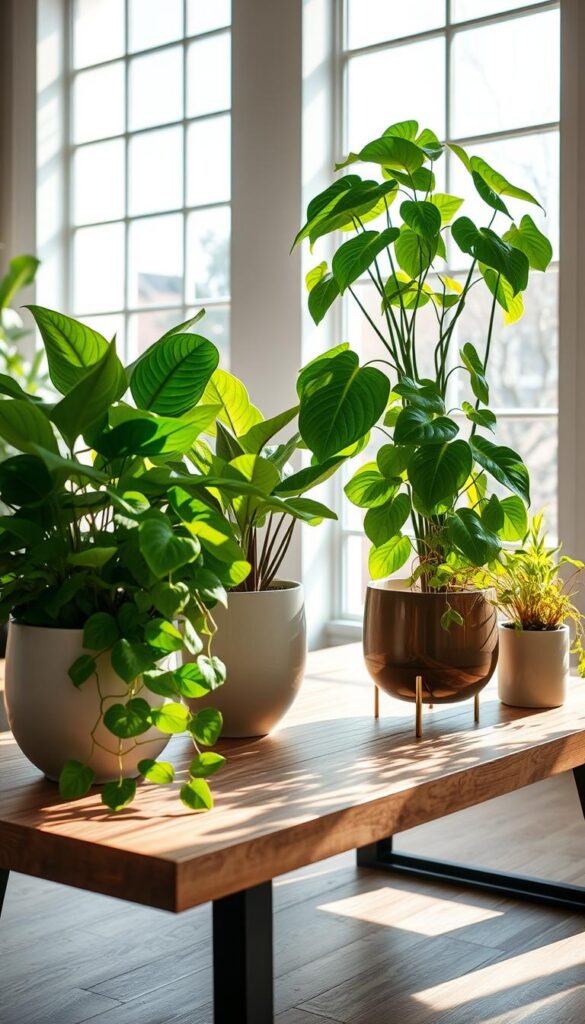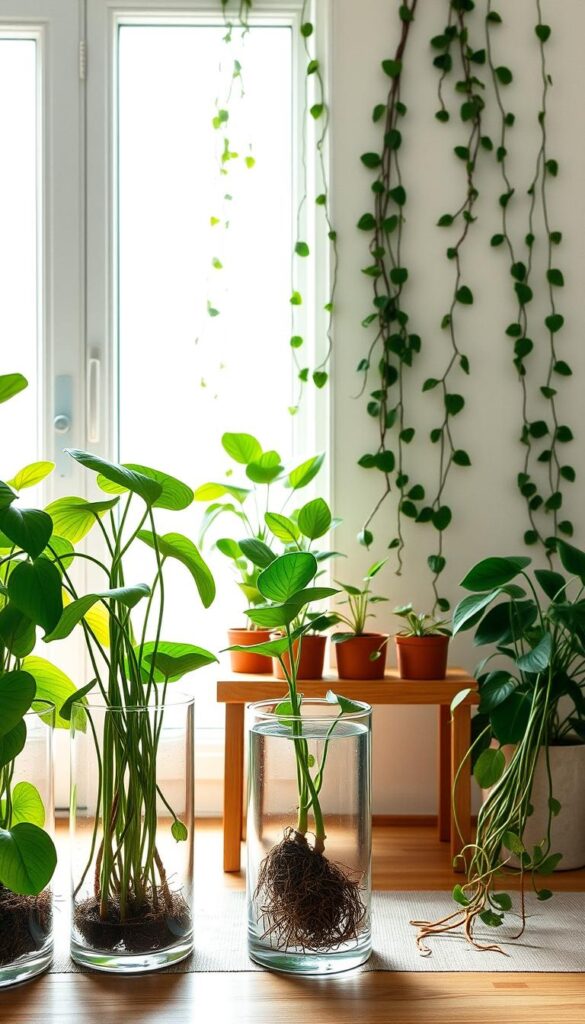As someone who’s passionate about bringing life into my home, I’ve often found myself pondering the differences between philodendron and pothos. Both are stunning, low-maintenance options for indoor spaces, but understanding their unique qualities can make all the difference in your planting journey.
These two popular houseplants, while similar in appearance, belong to different botanical families and thrive under slightly different conditions. Whether you’re a seasoned gardener or a curious newcomer, this guide will help you navigate the world of these beloved plants with expert insights and practical advice.
By exploring their growth habits, care requirements, and aesthetic charm, you’ll discover which plant best suits your lifestyle and home environment. Let’s dive into this detailed comparison and uncover the perfect choice for your indoor oasis.
Understanding the Basics of Pothos and Philodendron
Both Pothos and Philodendron are popular houseplants, but they belong to different genera within the same family. Understanding their origins and characteristics can help you make informed decisions for your space.
Taxonomy and Origin
Pothos, scientifically known as Epipremnum aureum, hails from the South Pacific. Philodendron, belonging to the Philodendron genus, is native to Central and South America. Both plants are part of the Araceae family, sharing some similarities but also having distinct features.
General Characteristics
Pothos is recognized by its heart-shaped, waxy leaves that grow in a variety of colors. Philodendron leaves are typically larger and more diverse in shape and texture. One notable feature of Philodendron is the presence of cataphylls, which protect new leaves as they unfurl.
Aerial roots are another key feature, aiding in their climbing growth habit. These roots help the plants absorb moisture and nutrients from the air, making them well-suited for vertical gardens or trellises.
| Feature | Pothos | Philodendron |
|---|---|---|
| Genus | Epipremnum | Philodendron |
| Family | Araceae | Araceae |
| Origin | South Pacific | Central & South America |
| Leaf Texture | Waxy | Smooth to Velvety |
| Leaf Shape | Heart-shaped | Variety of Shapes |
| Aerial Roots | Present | Present |
| Cataphylls | None | Present |
Understanding these basics helps in choosing the right plant for your home and care routine.
Key Differences in Leaf Shape, Texture, and Growth Habits
When it comes to choosing the perfect houseplant, understanding the physical characteristics can make a big difference. Both plants have unique features that set them apart, making each one special in its own way.
Distinct Leaf Appearance and Texture
The leaves are where these plants truly show their differences. Philodendron leaves are typically thin and soft to the touch, with a distinctly heart-shaped form. The “V” shape of their leaves is deeper, giving them a more dramatic look. On the other hand, pothos leaves are thicker and have a waxy texture. While they also come in heart shapes, the edges tend to be more rounded.
Another noticeable difference is the petiole, which is the stem that attaches the leaf to the plant. Philodendron petioles are usually longer and more slender, while those on pothos are shorter and sturdier. These small details can help you tell them apart at a glance.
Growth Patterns and Aerial Root Structures
Growth habits are another area where these plants differ. Philodendron tends to grow more upright and can become quite large if supported. They often develop cataphylls, which are protective covers that shield new leaves as they unfurl. Pothos, on the other hand, grows in a more trailing or climbing manner and doesn’t produce cataphylls. New leaves on pothos simply unfurl directly.
Aerial roots also play a role in their growth. Philodendron produces more numerous and thicker aerial roots, which help the plant climb and absorb moisture from the air. Pothos has fewer aerial roots, but they are still effective in supporting its climbing habit. These roots are a key feature of both plants and contribute to their ability to thrive in various environments.
philodendron versus pothos which is a better plant for indoor growing
When deciding between Philodendron and Pothos for your home, it’s essential to consider their unique needs and how they fit into your space.
Evaluating Indoor Compatibility and Space Requirements
From my experience, both plants adapt well to indoor settings, but they have different preferences. Philodendron tends to thrive in lower light conditions, making it ideal for rooms with limited natural light. On the other hand, Pothos is more forgiving in drier conditions and can survive with less frequent watering.
Space is another key factor. Pothos grows in a trailing manner, so it needs more vertical space to climb or hang. Philodendron can grow upright but can also adapt to smaller areas if pruned regularly. This makes Philodendron a great choice for confined spaces, while Pothos excels in open, airy rooms.
Temperature and humidity play significant roles in their care. Both prefer temperatures between 65-75°F and moderate humidity. However, Philodendron is more sensitive to extreme temperature fluctuations, while Pothos can handle drier air better.

Expert advice suggests maintaining consistent humidity levels for Philodendron and ensuring good air circulation for Pothos. Proper care and attention to these conditions will help either plant flourish in your home.
Comparing Care Needs: Light, Water, and Humidity Requirements
When it comes to nurturing your plants, understanding their care needs is crucial. Both plants thrive in bright, indirect light, but Philodendron can tolerate lower light conditions, making it ideal for rooms with limited natural light. Pothos, while adaptable, prefers brighter spaces to maintain its vibrant color.
Lighting, Soil, and Temperature Considerations
Light plays a vital role in maintaining the color and health of your plants. Philodendron may develop deeper color in brighter light, while Pothos might lose some variegation in low-light conditions. Both prefer well-draining soil and temperatures between 65-75°F. Philodendron is more sensitive to temperature fluctuations, so maintaining a stable environment is key.
Watering, Propagation, and Maintenance Tips
Watering is where these plants show their differences. Philodendron prefers consistent moisture, while Pothos is more forgiving if you forget to water occasionally. Use a balanced fertilizer during the growing season for optimal health. Propagation is straightforward—stem cuttings in water or soil work well for both. Regular pruning helps maintain shape and encourages new growth, keeping your plants looking their best.
Propagating and Expanding Your Indoor Plant Collection
Sharing the joy of plants with friends and family is one of the most rewarding aspects of indoor gardening. Propagation allows you to expand your collection and spread the beauty of nature. Both Pothos and Philodendron are excellent choices for this process, thanks to their growth habits that support easy propagation.
Effective Propagation Techniques
The key to successful propagation lies in selecting a healthy node. A node is the point where a leaf meets the stem, and it’s where new growth emerges. Look for a node with at least two leaves and ensure it’s firm and free of damage. This is where new leaves will develop, signaling the start of your new plant’s journey.
Here’s how I propagate my plants:
- 1. Cut a stem section with at least two nodes below a node using clean scissors or pruning shears.
- 2. Remove lower leaves, leaving only those above the node to prevent rotting.
- 3. Place the cutting in water or soil, and wait for roots to form.
It’s exciting to see new leaves emerge, indicating successful propagation. This method works well for both plants, though Philodendron tends to root faster in water, while Pothos prefers soil. Sharing these propagated plants with friends is a great way to connect over a shared love of gardening.

Expert Insights and Practical Advice for Plant Lovers
As I share my experiences with these plants, I’ve learned a few key strategies to keep them thriving. Whether you’re dealing with common issues or looking to enhance your home’s decor, these tips will help you make the most of your greenery.
Troubleshooting Common Plant Issues
Recognizing problems early is crucial. For root rot, check the stems—Philodendron stems soften faster, while Pothos stems become mushy. Pests like spider mites can be treated with neem oil, but application frequency differs: Philodendron needs less due to sensitive leaves.
Styling Your Home with Greenery
Both plants can elevate your space. Philodendron’s upright growth suits structured pots, while Pothos trails beautifully in hanging baskets. For shared spaces, combine them in complementary ways—Philodendron as a statement piece and Pothos for soft, flowing elements.
- Look for soft stems or yellowing leaves as signs of overwatering.
- Use neem oil for pests, adjusting application based on plant sensitivity.
- Philodendron thrives in structured pots, while Pothos excels in hanging baskets.
By addressing these aspects, you’ll create a harmonious and thriving indoor environment.
Final Reflections on Your Plant Journey
Reflecting on my journey with these two popular houseplants, I’ve learned that both bring unique charm to any home. The differences in their leaves, growth habits, and care needs are what make them special. Whether you prefer the trailing elegance of Pothos or the upright stature of Philodendron, each offers something distinct.
Light, soil, and water conditions are crucial for their health. Philodendron thrives in lower light, while Pothos prefers brighter spaces. Proper watering and well-draining soil ensure they flourish. Their versatility makes them ideal for various areas in your home.
Considering practical aspects like pet safety and air purification, both plants are excellent choices. They come in a variety of colors and shapes, adding beauty to your space. Their thick, waxy leaves and sturdy petioles make them low-maintenance favorites.
Experiment with different styles—Philodendron in structured pots and Pothos in hanging baskets. Share your experiences and enjoy the journey of nurturing these wonderful plants. Happy planting!
